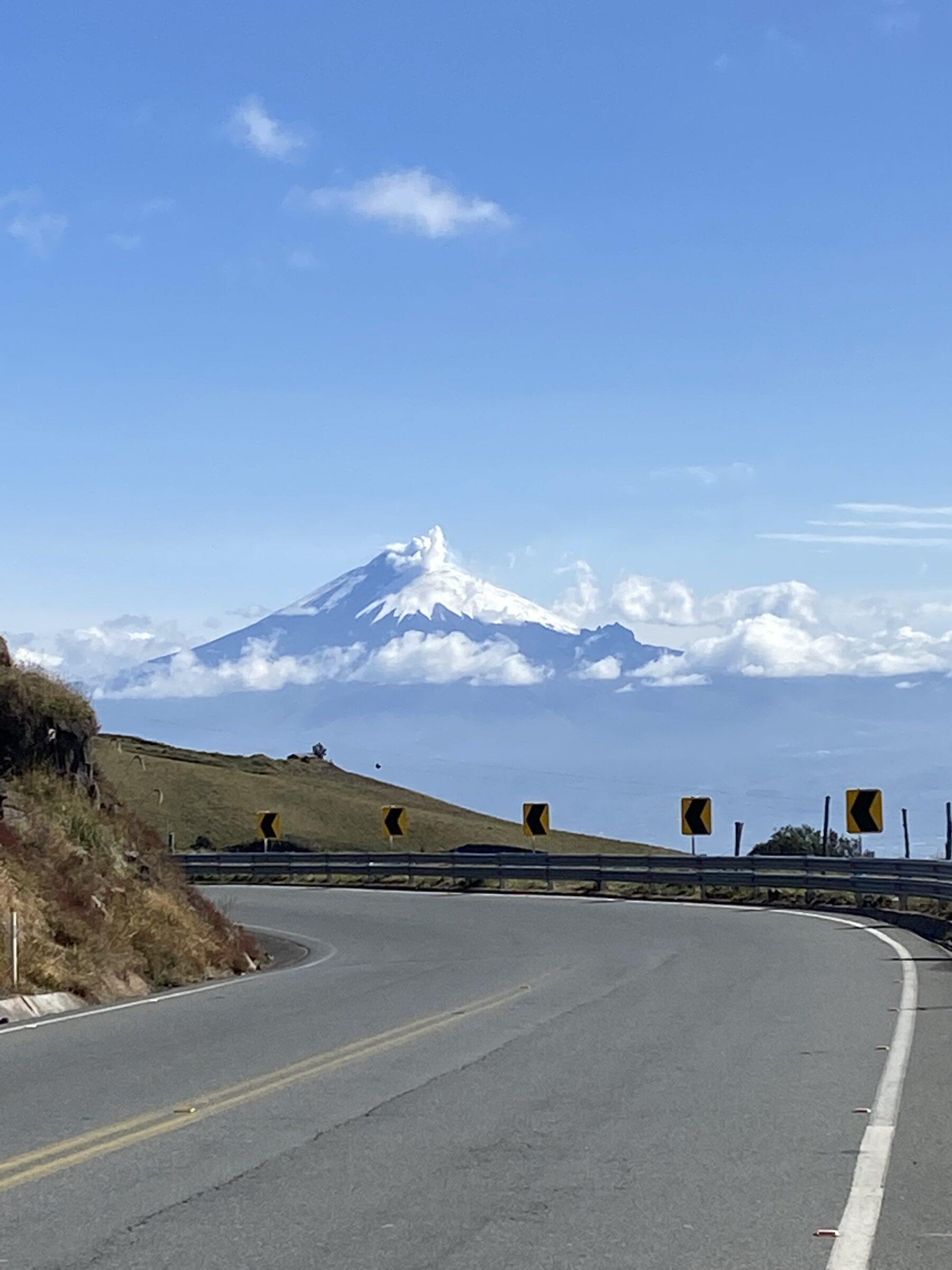Postcards from mainland Ecuador
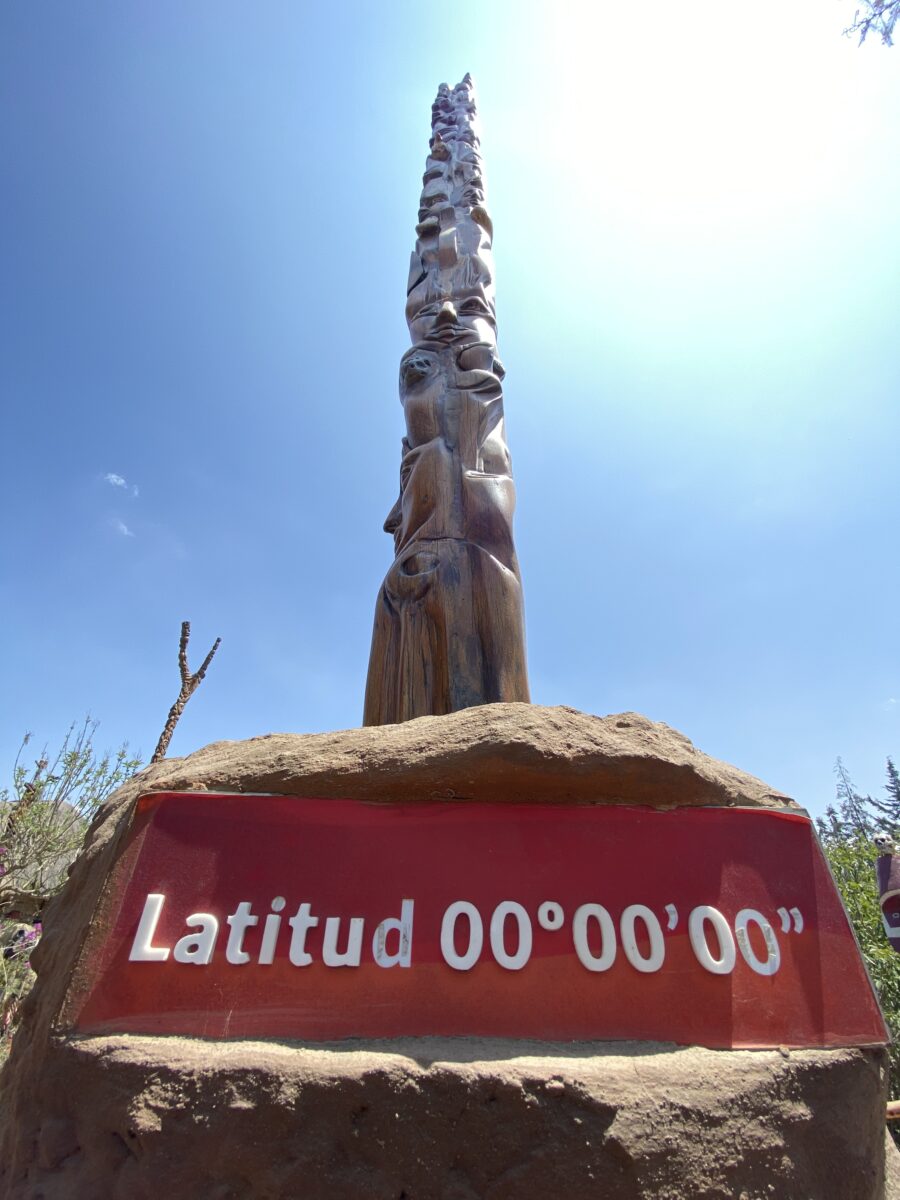 The planet is shaped like a mandarin
The planet is shaped like a mandarin
Latitude 00′ 00”. The ‘most scientifically correct’ line, calculated thousands of years ago by pre-Inca peoples, seems to pass right through here, at the Intiñan Museum Park, about 15 kilometres from Quito. Science therefore does not only come from the Western world, but history still often tends to attribute great mathematical discoveries mainly to the strongest, richest people, or to colonisers.
A few minutes from Intiñan, in fact, there is a gigantic monument, visited by thousands of people every year, that marks another crossing of the equator, established by a group of French scientists who in the 18th century thought they had correctly identified it right there, in San Antonio de Pichincha.
In the end, however, we do not really care where exactly the equator passes. What does matter, however, is knowing that this imaginary line divides our planet into two equal parts, making it comparable to a mandarin slightly squashed at the Poles. That here, in la mitad del mundo, the shadows disappear. That in this park, all decorated with statues representing various solar deities, the Coriolis Effect works differently: this force, apparently caused by the earth’s rotation and acting – among other things – on winds and the formation of storms and hurricanes, is in fact zero here.
That here, neither north nor south of anywhere, for once perhaps, one can feel balanced.
We are butterflies
From la mitad del mundo, an hour and a half jeep ride through the subtropical forest takes me to the Mariposario de Mindo. Before moving on to philosophical thoughts, however, you should know that I have had an extreme fear of butterflies for a very long time. I have never really dwelled on analysing (or having this phobia analysed): simply, for decades, I kept making theatrical scenes every time one of these cute insects approached me. Ridiculous. Then, for no clear reason or traceable to any logic, the fear of butterflies disappeared. Now I only have some difficulty with moths, but that is another story.
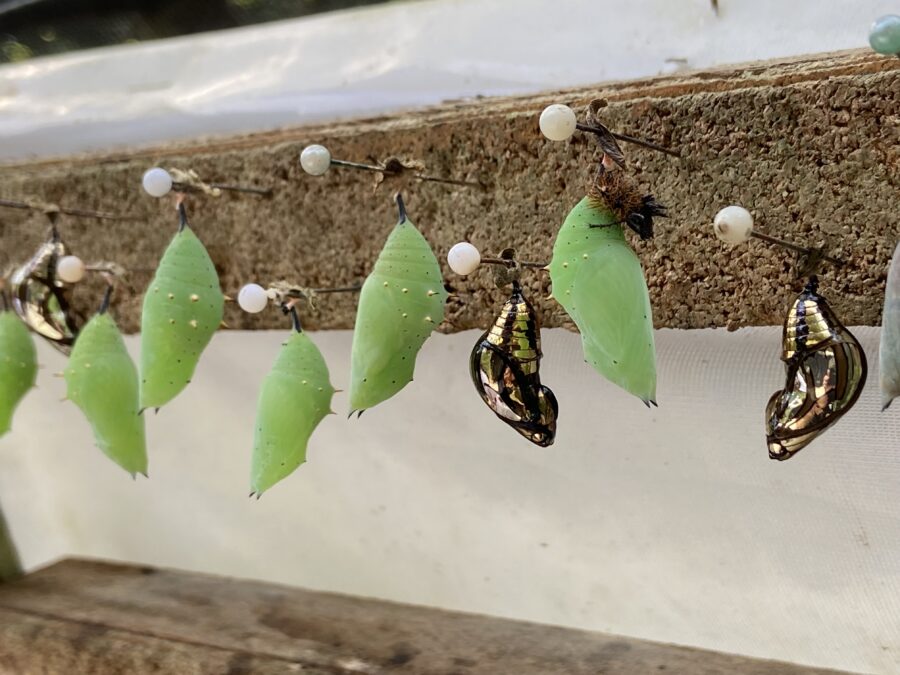
Be that as it may, the Mariposarium in Mindo is a magnificent sanctuary dedicated to butterflies, and as I move between one section and the next of this temple of nature, I reflect that life is ephemeral and short, but also sweet and illuminated by beauty: thousands of butterflies emerge slowly and delicately from even golden chrysalises, while others stand in the sun drying their wings or hang in groups under cascades of crystal-clear water. Some alight on you, unafraid, with their blue and red wings of a thousand colours. Others fly from plant to plant, and occasionally stop in curiosity to chat with other specimens. We are born, we love, we die. We are butterflies, and we don’t even realise it.
I should remember more, but I only remember the hummingbirds
Of Mindo and the forests that surround this quiet little village at about 1300 metres above sea level I should probably remember and so tell a lot more here, besides the butterfly sanctuary. I could tell you, for example, about the broken-down cable car we took to cross a lush, palm-filled valley to arrive after a walk of about four hours (round trip) first at the Reina Waterfall and then at the Nambillo Waterfall. And to give you a good laugh, I could tell you – in case you haven’t already – about the terror I feel every time I get on these little bimbos.
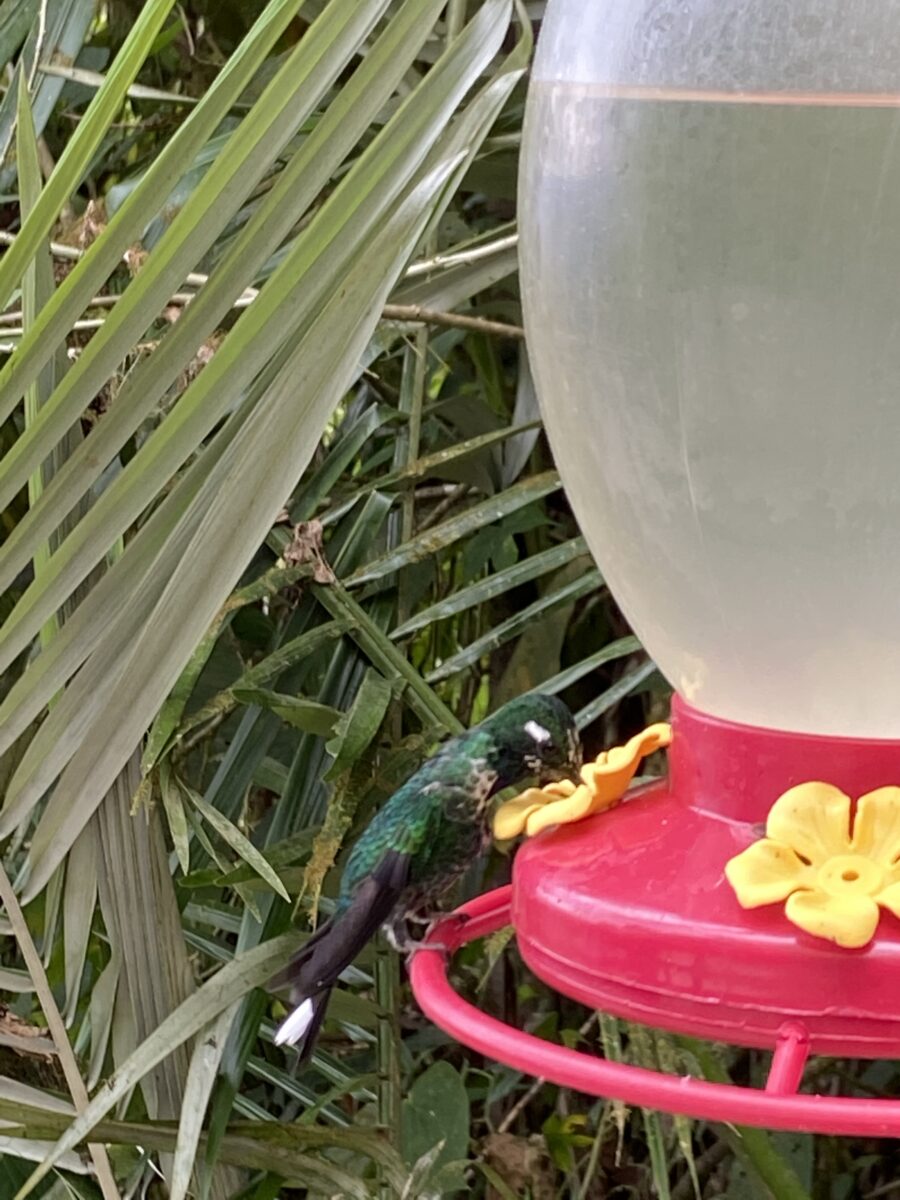
But honestly, the only thing that remains clear in my mind after almost a year and a half is the presence of hummingbirds. The first morning in Mindo, in fact, I remember going out on the roof of the small guesthouse and, almost as if by magic, being surrounded by these birds: they came and went, in different sizes and colours, at a speed that seemed impossible for their small wings to sustain. They piled up seeds and fruit from the many lush plants that hugged the terrace where I had breakfast.
The hosts had also left chunks of papaya and banana on colourful saucers and here too it was all a flurry of hues, an explosion of wings vibrating as they carried off these vices to perch on branches on which in turn seemed to grow a whole forest in height.
Some were less frightened by my presence and so approached my table, but only for a few moments. Some had feathery white legs, others sported very long cobalt-coloured tails. Then at one point, on a branch somewhat isolated from the others, there was a bit of chaos: a yellow and red toucan created it. It seemed to be a bit out of place among all the other little feathered missiles, so after a few minutes it took off.
The air was still, but life on that roof seemed invincible.
Rosemary knows it
Cotopaxi. Chimborazo. Tungurahua. Sounds like an ancient magic formula. Cotopaxi is part of the Central Cordillera of the Andes and one of the highest active volcanoes in the world. In the Andean epic, it is said that in the beginning he was a mighty warrior. In love with the beautiful Tungurahua, he clashed fiercely with Chimborazo (6310 m a.s.l.), the highest and most impregnable volcano in Ecuador. Explosions and the destruction of the city of Latacunga were the fierce instruments used by the two fiery suitors to attract the attention of their lover (who chose, for the record, Chimborazo).
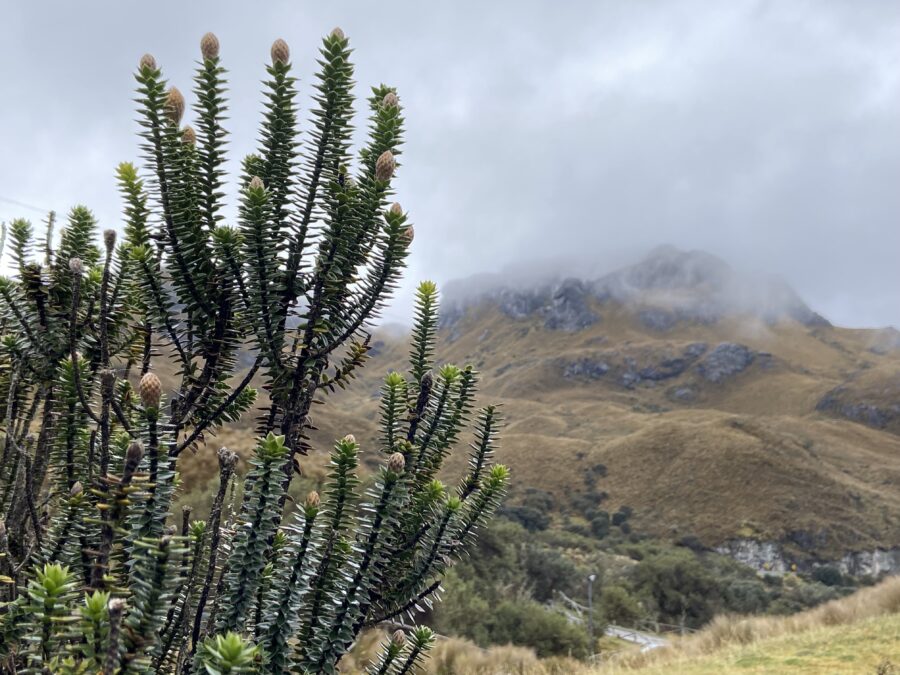
Whatever the case, at 5897 metres above sea level, Cotopaxi seems to touch the sky, rejected or not by its beloved, and on a cloudless day, this giant can be seen from Quito. As I walk through the National Park that bears its name, I gaze at its almost symmetrical triangular shape and snow-capped peak, which can be reached from the Refugio José Rivas (4864m). The ascent from there usually starts around midnight, because being on the equator, the sun’s perpendicular rays would melt the ice during the day. You climb towards the moon but, according to the story, only half of those who decide to attempt the ascent make it: the mountain at these heights makes you shrink, your breath is short, your legs heavy. In 1802, Alexander Von Humboldt declared it inviolable (but was contradicted some seventy years later by Wilhelm Reiss).
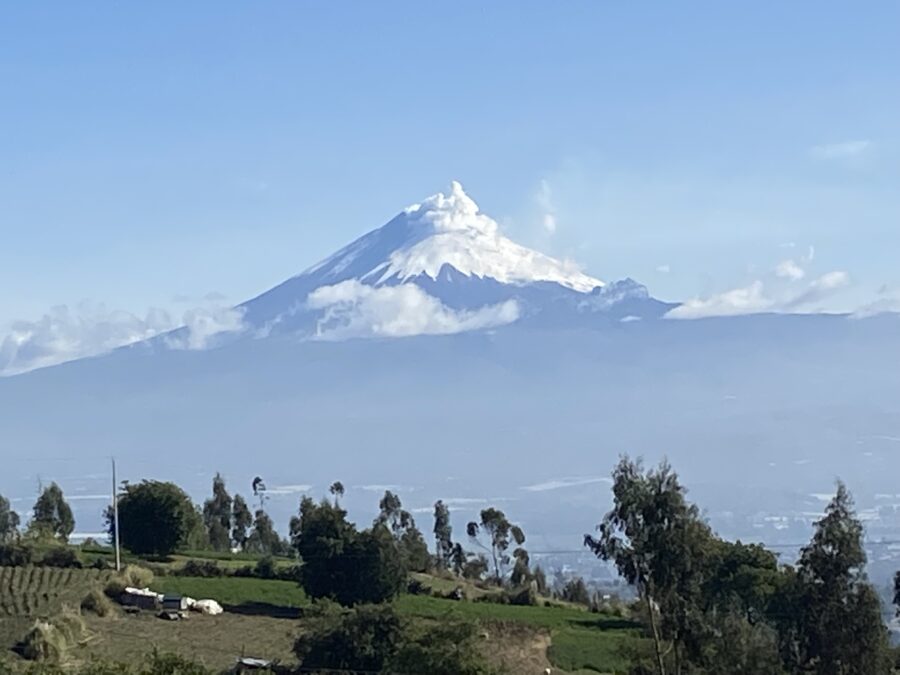
Here too, the glaciers are shrinking at an exponential rate, and according to research by the Limpiolungo education centre (at the entrance to the park), they will disappear completely within 20 years. The Cotopaxi National Park is therefore no exception to the decline inflicted on the planet by human beings. We feel we are cool; we think we are strong, and we decide that nothing is ever enough. We should just learn instead from the rosemary that grows here at 3300 metres: it has no scent up here. Its leaves are smaller. At altitude, everything becomes tinier, and everything is optimised and scaled down. It is enough like that. We should eat some humble pie and try to protect this beauty.
